|
Pilatus PC-6 Turbo Porter
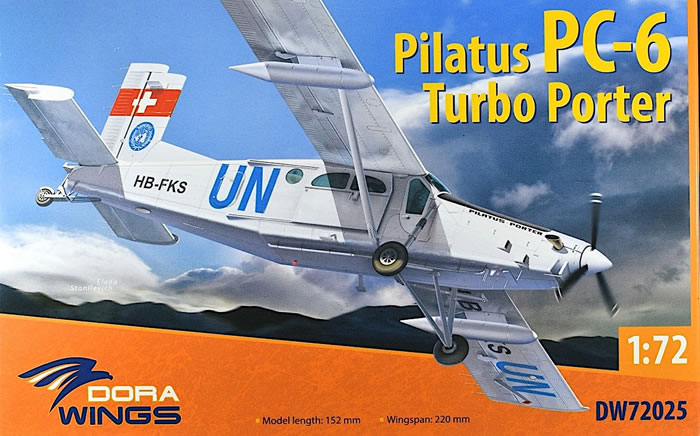
Dora Wings, 1/72 scale
S u m m a r y : |
Catalogue Number: |
Dora Wings Kit No.
DW 72025 - Pilatus PC-6 Turbo Porter |
Scale: |
1/72 |
Contents & Media |
103 parts in grey styrene (not all are used), 10 in clear, two sheets of PE, resin wheels/exhausts, masks, and one decal sheet with markings for four airframes. |
Price: |
£19.99 EU Price (£16.66 Export Price) plus shipping available online from Hannants
Click here for currency conversion |
Review Type: |
First Look. |
Advantages: |
This is a new-mold 1/72 PC-6 full of detail right out of the box. The kit utilizes conventional engineering augmented with extensive PE and markings for four interesting schemes. |
Disadvantages: |
This is a limited run kit so extra effort will be required for parts clean-up, test fitting, and re-scribing some soft surface details. Photo-etch is incorporated into much of the build; not an issue for most but a challenge for some.. |
Conclusion: |
This is a nice kit with crisp surface details, a simple parts count, a comprehensive photo-etch fret and nice decals right out of the box. |
Reviewed by John Miller

Background:
The Pilatus PC-6 Porter is a single-engined STOL utility aircraft designed by Pilatu Aircraft of Switzerland. First flown in 1959, the PC-6 was produced at Pilatus Flugzeugwerke in Stans, Switzerland. It has been built in both piston engine- and turboprop-powered versions and was produced under license for a time by Fairchild Hiller in the United States. After around 600 deliveries in six decades, Pilatus produced the last one in early 2019.
The Design:
The Pilatus PC-6 Porter is a Short Takeoff and Landing (STOL) utility aircraft. The majority of aircraft are powered by a single Pratt & Whitney Canada PT6A turboprop engine, which drives a fully reversible, constant-speed, three-bladed HC-B3TN-3D (or an alternative four-bladed HC-D4N-3P unit) Hartzell aluminium propeller via a reduction gearbox. Pilatus claims that it possesses unique STOL capabilities, capable of landing in places only otherwise accessible by rotorcraft. It is fully capable of being operated from unprepared rough airstrips, in remote areas, hot climates and at high altitudes in all-weather conditions.
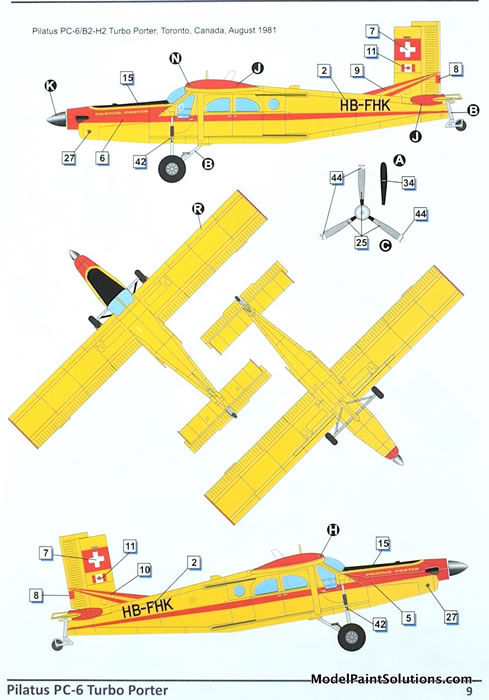
In particular, the undercarriage employed provides for high wing and propeller clearances, making the PC-6 less susceptible to damage than conventional nose wheel-type undercarriages. For further landing versatility, various types of landing gear may be optionally installed allowing it to operate from different types of terrain.Options include floats for water landings and skis for landing on snow.
Edited from Wikipedia - https://en.wikipedia.org/wiki/Pilatus_PC-6_Porter
This is clearly a limited production kit so extra effort will be required to deal with flash and parts clean up. Similarly, I would expect a fair bit of trial and error when it comes to the fit of some components.
The surface details are well done but a little uneven. Some areas will require refreshing with files and a scriber. Parts layout and engineering are conventional suggesting this will be a straightforward build.
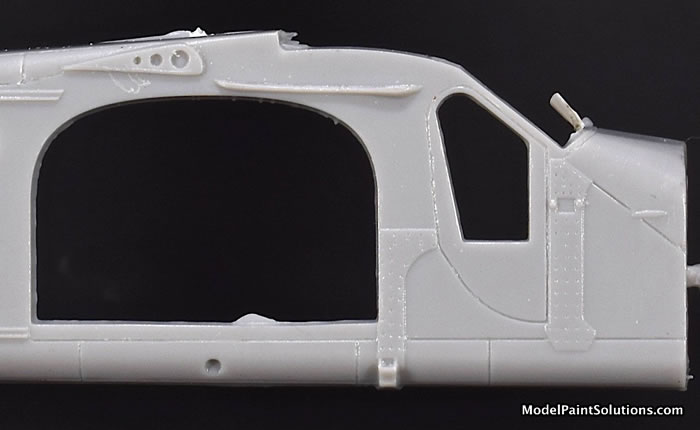
Assembly begins with the cockpit/cabin wherein the six passenger seats rest on PE supports. Here, as with most of the build, extensive use is made of photo-etch parts.
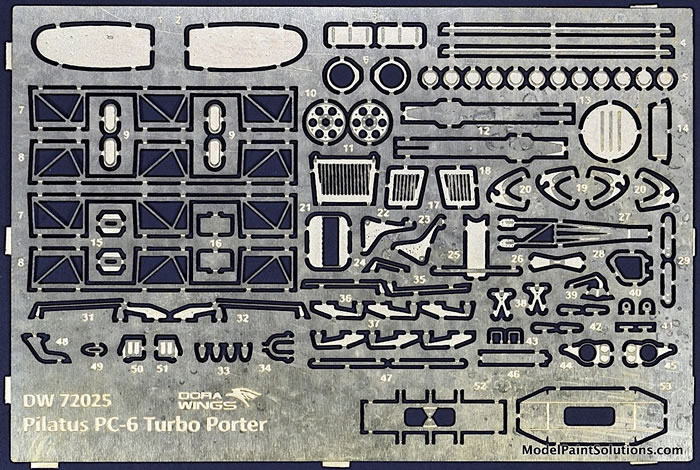
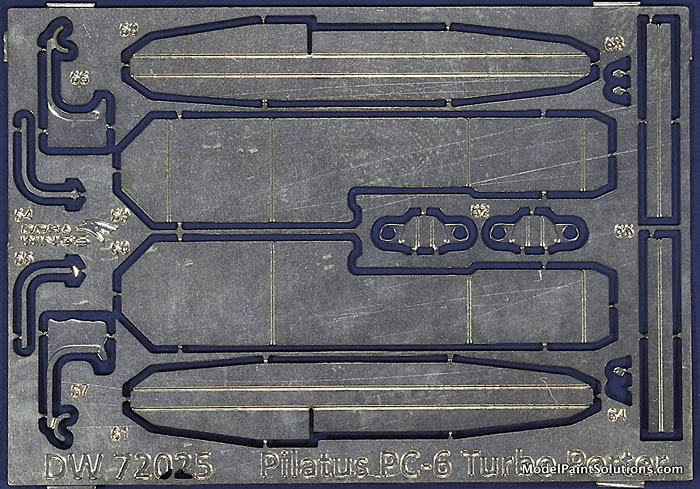
The main instrument panel detail is provided by a decal.
With the cockpit/cabin trapped between the fuselage halves, the builder is instructed to assemble the 8-piece nose section complete with the prominent exhausts and single-piece propellor/hub. Some refreshing with files and sanding sticks will be required on some of these components.
After the halved horizontal stabilizers are assembled and augmented with 7 additional PE details, the upper and lower wing halves come together. The wing has separate flap/aileron assemblies, which are not poseable.
Should you choose to mount your Turbo Porter on skis, instructions for assembling the photo-etch skis are provided.
Next in sequence is the joining of the major sub-assemblies (fuselage, wing, and nose section) as well as the vertical and horizontal stabilizers and landing gear.
The resin exhausts are nicely molded and two different types are provided.
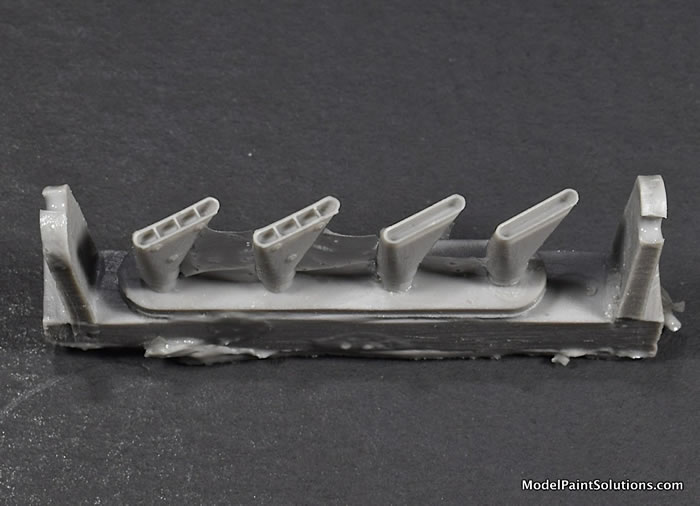
In contrast, the resin wheels/tires (intended for use with the skis) will require some work before priming and painting.
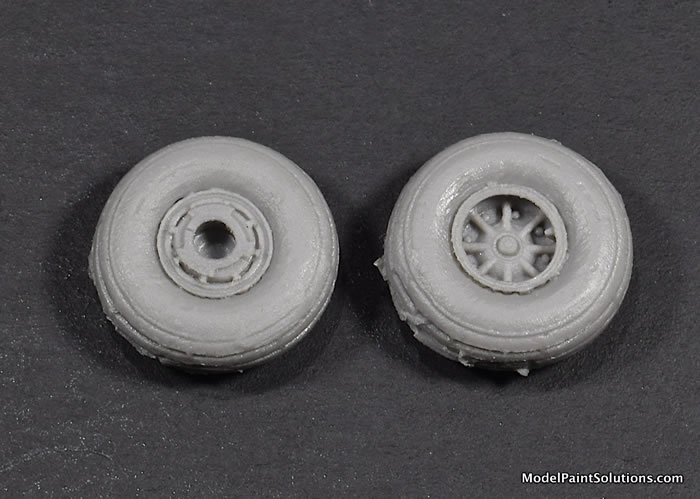
Nicely molded styrene wheels/tires are provided for those doing their Pilatus on conventional gear.
With the airframe largely complete at this point, additional surface details in the form of PE inspection hole covers, antennae, and control surface hinges are added. Addition of the wheels or skis and the main wing struts completes the build.
The clear parts are nicely molded with scale-appropriate framing.
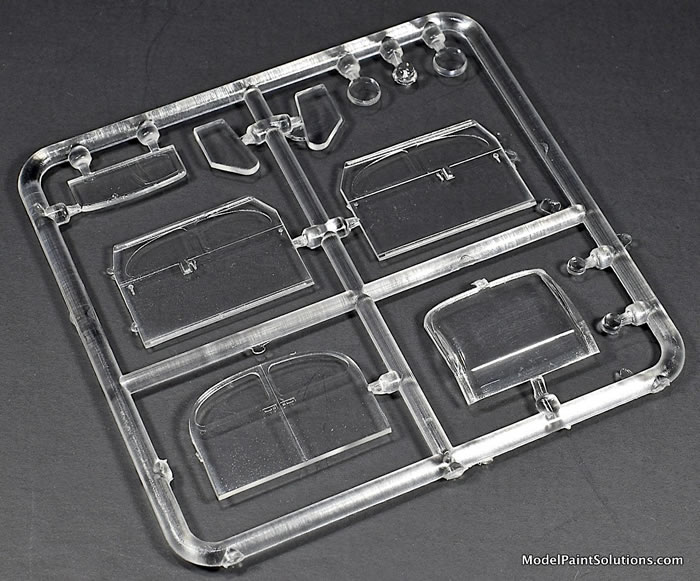
Die-cut vinyl masks are provided for both the cockpit/cabin windows and wheels.
The decals, by Decograph, are crisply printed with good color hue and density.

Markings and airframe stencils are provided for four airframes as follows:
-
Pilatus PC-6/B2-H4 Turbo Porter, Armee’ de TERRE, Koksjide Air Base, France, September, 2005.
-
Pilatus PC-6/B2-H2 Turbo Porter, Toronto, Canada, August, 1981.
-
Pilatus PC-6/B2-H2 Turbo Porter, JA8221, Japan Polar Research at Antarctica, 1980.
-
Pilatus PC-6/B2-H4 Turbo Porter, UN Mission, Western Sahara, August, 1991.
This will build into a nice kit but I suspect there’ll be a fair amount of work involved. Many of the surface details are nicely done however some areas will require refreshing with a scriber. There is a lot of detail in this kit based on photo-etch components. Many will find this to their liking as PE really lends itself to details in this and smaller scales. For some, the extensive use of PE will be challenging. That said, there’s nothing in the build, including the PE, that can’t be achieved with a bit of experience, good light/magnification, and patience. Recommended! (Highly recommended to those experienced with PE!)
Now go paint something!
Review kit provided by Skyway Model Shop via my retirement fund, again.
For more on this review visit Modelpaintsolutions.com.
https://modelpaintsol.com/reviews/dora-wings-72-pilatus-pc-6-turbo-porter-72025
For more on this review visit Modelpaintsolutions.com
Review Text and Images Copyright © 2021 by John Miller
Page Created 3 March, 2021
Last updated
3 March, 2021
Back to HyperScale Main Page
Back to Reviews Page |
